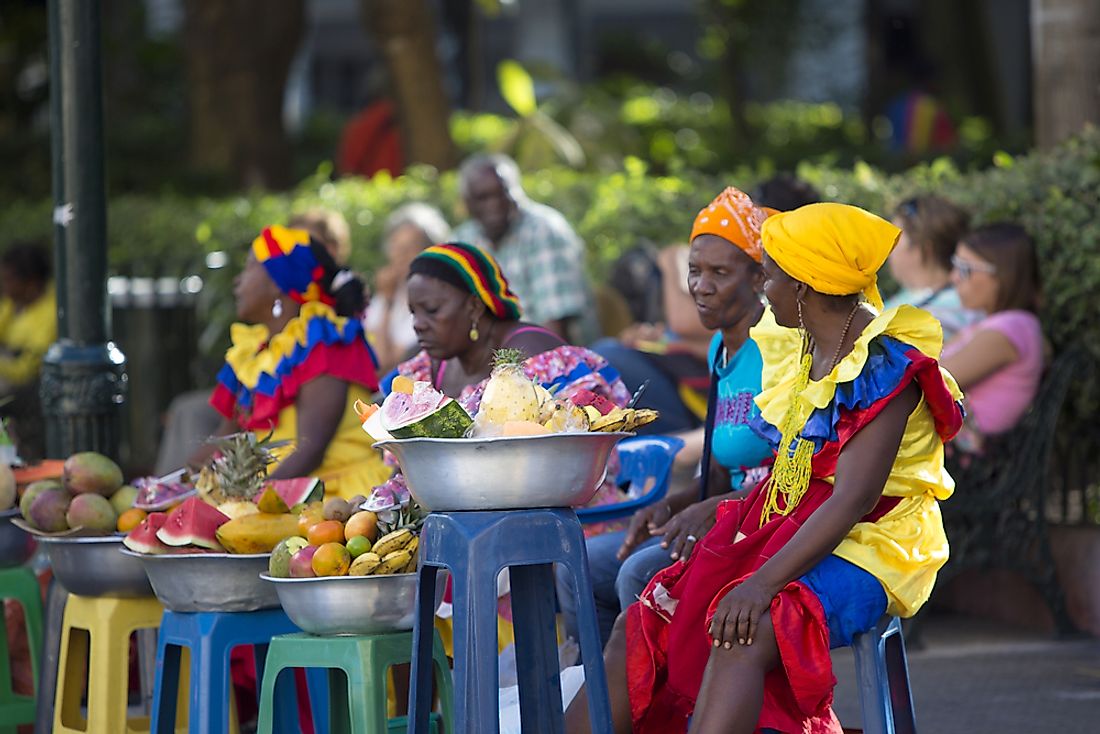Ethnic Groups Of Colombia

The majority of Colombians identify as being of either European or of mixed European and American Indian ancestry. The ethnic diversity of Colombia is a result of interactions between indigenous peoples, Spanish colonizers, and African slaves. Colombia boasts an ethnic diversity of around 85 different ethnic groups. Most Colombians identify with the various ethnicities on the basis of skin color, ancestry or social status.
Ethnic Groups Of Colombia
Mestizo
The Mestizo ethnic group claims a 53.5% share of Colombia’s population. Before Spanish occupation of Colombia, different tribes of the Amerindians resided in the region. These tribes were remarkable potters and goldsmiths, as witnessed through numerous archaeological treasures from this period. The interactions between the indigenous community with the advancing Spanish conquerors gave rise to the Mestizo population. The Mestizo primarily inhabited the Andean highlands, where they were involved in agriculture, but began moving into the urban areas from the 1940s onward. In modern Colombia, the ethnic group is found scattered throughout the country and mostly speak the Spanish language.
African Colombians
Colombians of African descent make up 10.5% of the country’s population. African slaves were brought to Colombia by the Spanish to work in the colonial era mines and plantations. The indigenous people who worked on the plantations were dying in large numbers due to harsh working conditions. The Mulatto population was a result of the interactions between the black and white communities. The Palenquero ethnic group is made up of people of African ancestry who speak the Creole language of Palenquero. The Afro-Colombian ethnic group of Raizal is a Protestant ethnic group speaking the San-Andres-Providencia Creole language. People of African descent are mainly concentrated in the coastal regions of Colombia. Afro-Colombians, though having legal rights and protection, are continually subjected to social and economic discrimination. These ethnic groups are at the center of fierce disputes, due to their location in resource-rich regions and geographically strategic parts of the country. The Afro-Colombian community has incorporated their African heritage in music, language, and religion.
Native South Americans
Around 3.4% of Colombians identify as being Native South Americans. These ethnic groups are made up of the ancestors of indigenous peoples who inhabited Colombia before Spanish colonization. The earliest inhabitants of Colombia arrived in 10,000 BC. These native groups are credited with the pottery and gold work artifacts displayed in various museums in the country. There are 102 of these indigenous groups in modern day Colombia. Most of these indigenous groups live in isolated areas, mainly in the southern highlands, the arid Guajira Peninsula, the Amazon, and the forests found north and west of Cordilleras. The Wayuu are the largest of these native ethnic groups. Most of these indigenous communities speak their native languages and practice different cultures.
Other Ethnicities
Other ethnic groups account for a collective 1.9% share of Colombia’s population. The Romani population of Colombia is the largest of these groups. The Romani people trace their ancestry to Northern India, from where they fled persecution and racial discrimination. They subsequently faced slavery in Europe, from where they fled to Colombia which prohibited the importation of slaves in 1821 through a Spanish law. The Romani people in Colombia chiefly speak the Romany language and engage in craft, music and dances, elements which characterize the Romani culture. Immigrants represented in Colombia are from numerous countries such as Venezuela, Germany, Syria, Palestine, Uruguay, Spain, Japan, Lebanon, and Italy.
Racial Tensions in Colombia
Against a backdrop of great ethnic diversity, minority groups in Colombia experience some degree of economic and social marginalization. This situation has seen Colombian society accused of having an undeniable presence of racism. Evidence points to the Mestizos, who are the majority ethnic group, having higher living standards than those of other numerous ethnic groups in Colombia. Tensions between ethnic groups continue to increase in the multi-ethnic country.
Ethnic Groups Of Colombia
| Rank | Ethnic Group | Share of Colombian Population |
|---|---|---|
| 1 | Mestizo | 53.5% |
| 2 | White European Colombian | 30.7% |
| 3 | African Colombian, Mulatto, Palenquero, or Raizal | 10.5% |
| 4 | Native South American | 3.4% |
| Other Ethnicity | 1.9% |











